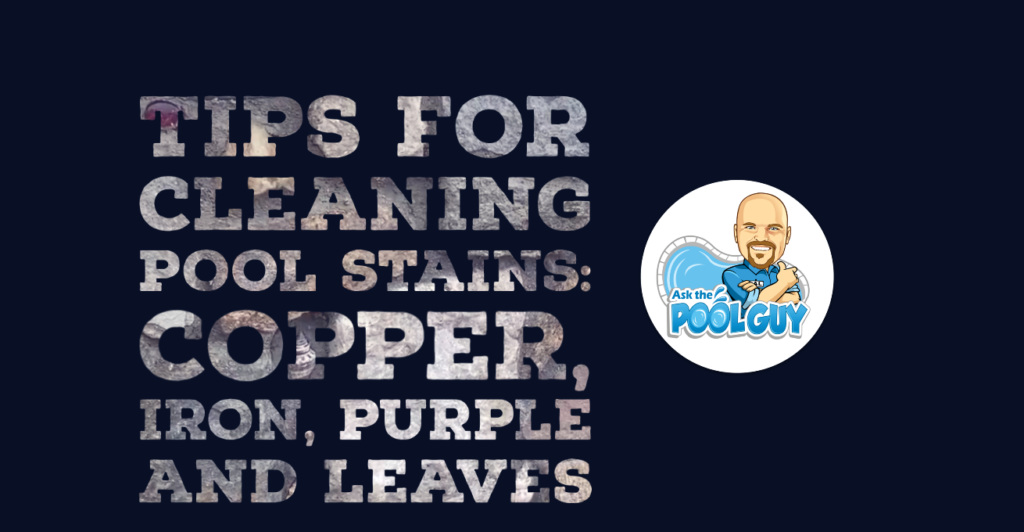
You put in time, effort, and money to create the perfect backyard oasis with your pool. The last thing a pool owner wants to discover are unsightly stains covering the pool tile or liner. It’s important to recognize no stain can be treated in the exact same way. So before you invest in cleaning up make sure you identify what kind of stain you have so you know how to properly treat it.
Copper Stains
These are the most common. Copper enters the pool from algaecides, old copper plumbing, and heat exchangers. These stains are fairly easy to prevent by following simple dosing charts for algaecides and pH levels. If you happen to make a mistake, the stains can be removed.
The most commonly used stain removers are liquid or dry granular stain removers. Granulars are the most popular. They lift the stain so it can then be treated by another agent to help the filter trap the removed metals from the pool water. If you choose to use a liquid stain remover you should know that most removers contain phosphoric acid which adds phosphates to your pool. They need to be removed at a later time.
These stains have a brown appearance. Iron makes its way into pool water through various pool heaters, lawn fertilizers which contain iron, and the most common: well water. In many areas of the country that aren’t provided city water, wells are used to draw water which then fills pools. To remove iron stains you can use the same removal treatment as copper. It’s important to keep the water balanced and identify the source of iron so it doesn’t continually happen.
Purple Stains
Purple stains occur when your pool has a cyanuric acid level over 100ppm (parts per million). If it combines with copper in the pool water, it can forma purple appearance on the surface of the pool tile line and pool cleaner. This problem will not go away no matter the stain cleaning techniques used unless you identify the source of the problem. The cyanuric acid level needs to be around 50ppm rather than 100ppm.
Natural Staining
When your pool is out in the elements it is impossible to protect it from all types of staining. Leaves, sticks, dirt, etc. will enter your pool and settle on the bottom. Leaves can leave stains where they settle on the pool floor if not cleared away quickly. Most often natural stains will be cleared up when the pool is shocked and the pH is balanced. If this doesn’t work, try citric or ascorbic acid.
Rust Stains from Screws or Metal in the Pool
If your water chemistry is very aggressive – meaning the pH and alkalinity are extremely low, combined with a minimal calcium hardness level, you can experience rusting of stainless steel screws. In some cases, if you catch this early, treating with Natural Chemistry Stain Free followed by Ferri-Iron Tablets may be successful. Otherwise, you may need to look into replacing your vinyl liner pool and white goods, or an acid wash on a gunite pool. Once that is done make sure you follow correct water chemistry guidelines – testing at least once or twice a week and having regular checkups done on your pool.
Have any tips or tricks for removing pool stains? Share with us!

